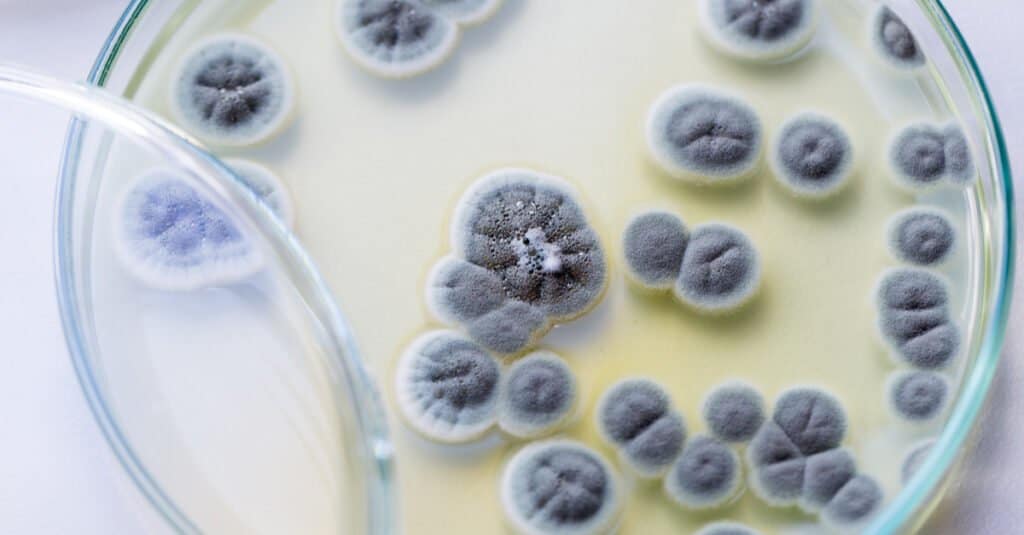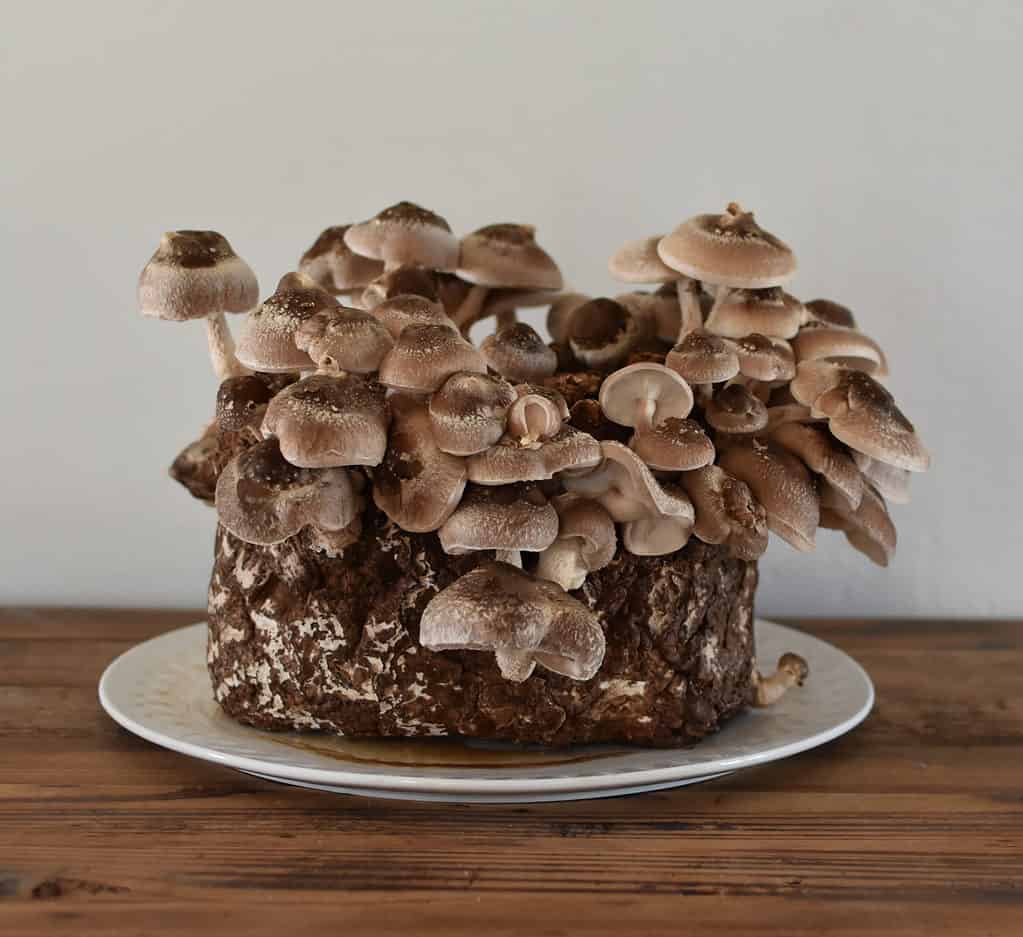If you’re an avid gardener and are becoming interested in fungi, you may be wondering if you can plant mushrooms. While some folks think mushrooms are plants, and thus could be grown like the veggies in your garden, fungi and plants actually belong to entirely separate kingdoms. In fact, the behaviors of fungi are actually closer to animals than plants.
In this guide, we’ll provide an overview of what fungi and mushrooms are and why you can’t plant them.
Read on to learn more.
What Are Fungi?

Fungi can mean many things besides just mushrooms.
©Rattiya Thongdumhyu/Shutterstock.com
Fungi are taxonomized in the kingdom Fungi of the domain Eukarya. They are single or multi-celled eukaryotic organisms that are non-photosynthesizing (heterotrophic), produce exoenzymes to convert compounds in organic matter into absorbable nutrients, and have cell walls that contain chitin. There are many other features that appear but aren’t shared across all organisms in the kingdom Fungi such as whether they reproduce through fragmentation, producing spores, budding, etc. whether they form fruiting bodies, develop a network of mycelium, are macroscopic or microscopic, are saprobic, parasitic, mycorrhizal or exhibit a combination of these ways of deriving nutrients, and so on.
Can You Plant Mushrooms: What are Mushrooms?
And, while we’re on the topic of defining fungi, you may be asking “ok then, what exactly is a mushroom”? “Are mushrooms and fungi interchangeable terms”? The answer to this second question is no. These terms are not interchangeable and not all fungi produce mushrooms.
You might think that defining mushrooms is straightforward, or at least that a well-informed person could give you a straightforward answer. But alas, as with many things in the realm of mycology, the answer is much more complex, kind of elusive, and can be subject to furious debate among the world’s smarty-pants mycophiles. Some mycologists define mushrooms as the fleshy, above-ground, spore-bearing fruiting body of a fungus. With this definition, truffles (found underground) would be kicked out of the mushroom category. Others say that mushrooms include fruiting bodies within the phylum Basidiomycota. This definition would not only kick out truffles but also morels since both are part of the phylum, Ascomycota. Others would define mushrooms as only belonging to the category of macroscopic, rather than microscopic, fungi that produce fruiting bodies.
In this guide, we’ll broadly define mushrooms as the fleshy, spore-bearing fruiting body of macroscopic fungi within the Basidiomycota and Ascomycota phyla that often, but don’t always, appear above ground. Together, Basidiomycota and Ascomycota form the subkingdom Dikarya.
So, when you’re strolling through the forest and come across a mushroom, remember that you’re only looking at the reproductive structure of the fungus. The vast majority of the fungus exists underground as the mycelium. Mycelium consists of a network of root-like, fibrous, branching fungal strands, called hyphae. It is the mycelium that lives on after a mushroom releases spores and decays.
So, Can You “Plant” Mushrooms?

A beautiful prime Cerioporus squamosus aka Dryad’s saddle
©Maxal Tamor/Shutterstock.com
Now that you, more or less, know what a mushroom is, you may be starting to understand why you can’t “plant” a mushroom. If you pluck the fruiting body of a fungus and partially bury it in the soil, it likely won’t grow any mycelium. The plucked and “planted” mushroom will probably just decay in the soil.
When we talk about planting various species of plants, we’re usually either talking about planting seeds into the soil, which produce roots and the above-ground vegetative structure, or transplanting seedlings from trays into the soil or larger pots.
So, while you can’t plant mushrooms, you can cultivate some species of mushrooms. You can achieve this through a process of inoculating species-appropriate pasteurized or sterilized substrates with spawn or spore cultures to colonize the substrate with mycelium. The mycelium then incubates, and during this time, fully colonizes the substrate. Once the mycelium fully colonizes the substrate, the process of triggering fruiting conditions can begin. That’s when the mushrooms decide to form and grow.
Cultivating Mushrooms

Shiitake mushrooms growing on a block.
©Mary Elise Photography/Shutterstock.com
There are many methods of mushroom cultivation that include both indoor and outdoor processes on various substrates such as hardwood logs, straw, sawdust, and more. Some species, such as the common oyster mushroom (Pleurotus ostreatus) are quite content to colonize a host of cellulose-based substances. Other species, such as shiitake (Lentinula edodes) have less aggressive mycelium and are people typically only cultivate them either on hardwood logs or in sterilized, supplemented hardwood sawdust.
There is a lot to know about mushroom cultivation, and most of the time, it doesn’t look much like gardening plants at all. The closest you might get to the idea of gardening is cultivating species such as the wine cap mushroom (Stropharia rugosoannulata) in wood chip beds. But again, the actual process involves inoculating the wood chips and straw with Stropharia rugosoannulata spawn to cultivate these edible mushrooms, not planting the fruiting bodies. Although it may be possible to get the stem but from this mushroom to start growing onto wood chips.
To learn more about cultivating mushrooms, check out our articles on some of the most beginner-friendly mushrooms to cultivate at home!
The photo featured at the top of this post is © bogdan ionescu/Shutterstock.com
The information presented on or through the Website is made available solely for general informational purposes. We do not warrant the accuracy, completeness, or usefulness of this information. Any reliance you place on such information is strictly at your own risk. We disclaim all liability and responsibility arising from any reliance placed on such materials by you or any other visitor to the Website, or by anyone who may be informed of any of its contents. None of the statements or claims on the Website should be taken as medical advice, health advice, or as confirmation that a plant, fungus, or other item is safe for consumption or will provide any health benefits. Anyone considering the health benefits of particular plant, fungus, or other item should first consult with a doctor or other medical professional. The statements made within this Website have not been evaluated by the Food and Drug Administration. These statements are not intended to diagnose, treat, cure or prevent any disease.
Thank you for reading! Have some feedback for us? Contact the AZ Animals editorial team.






